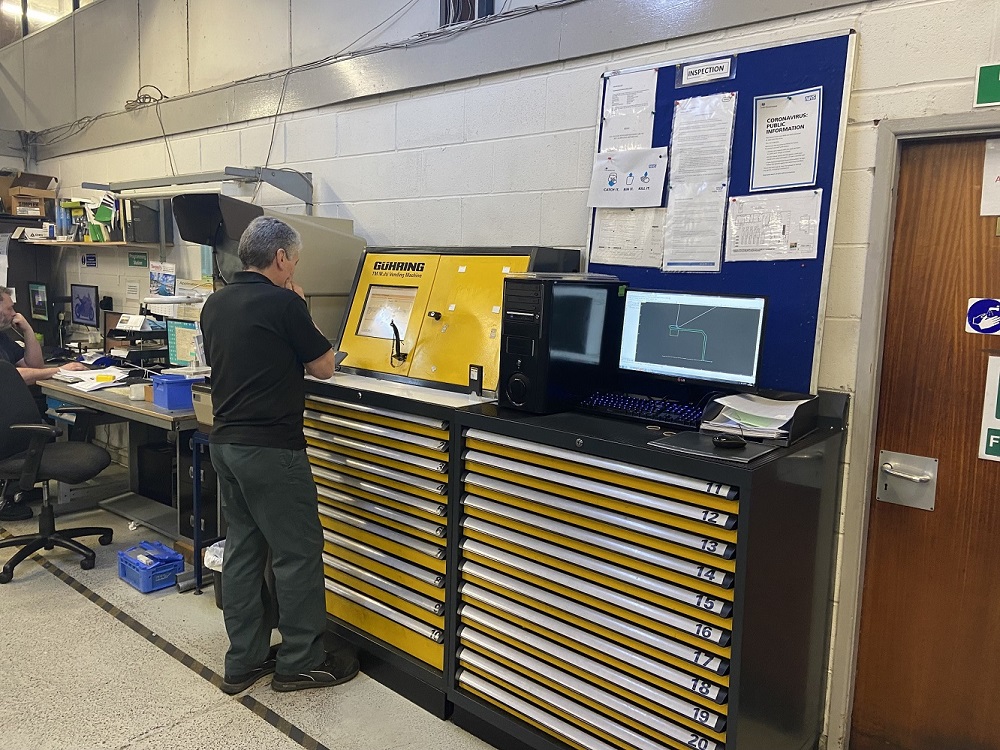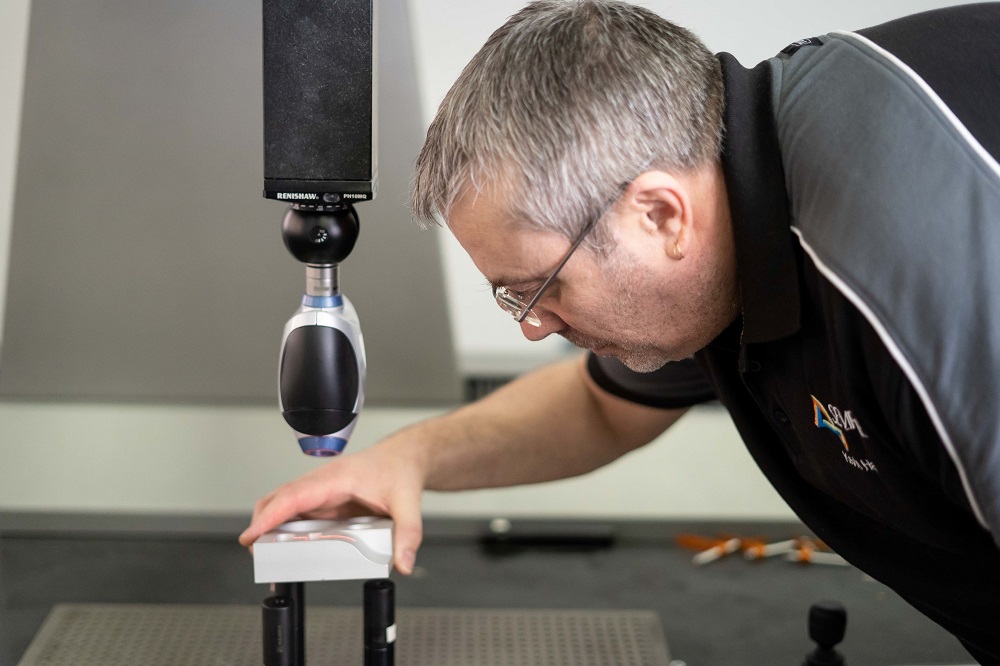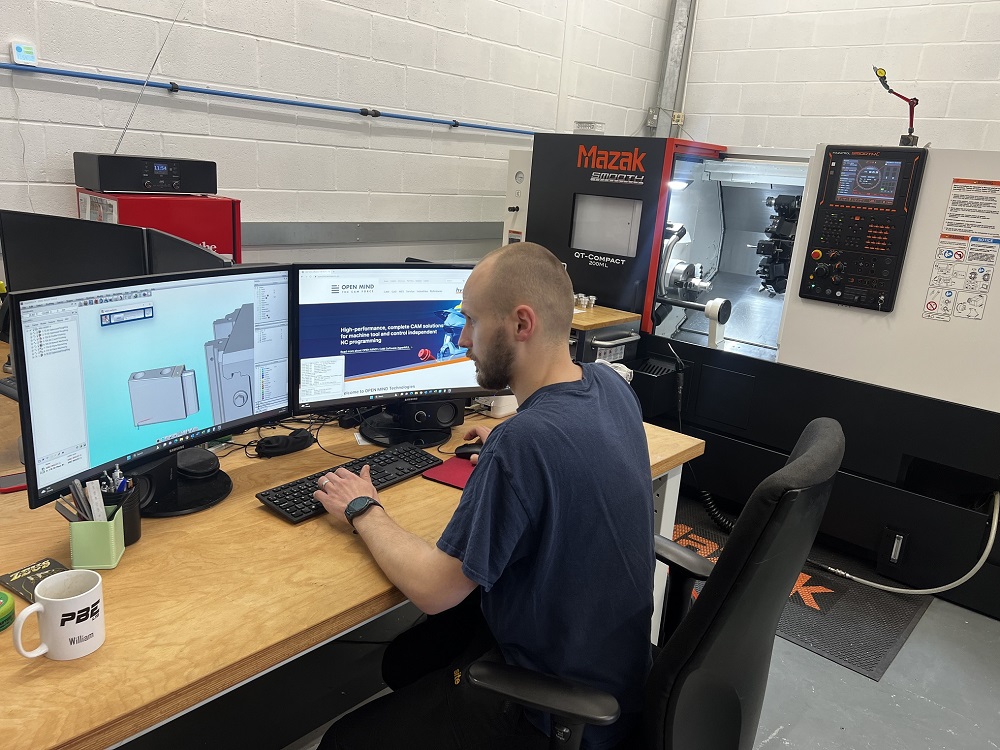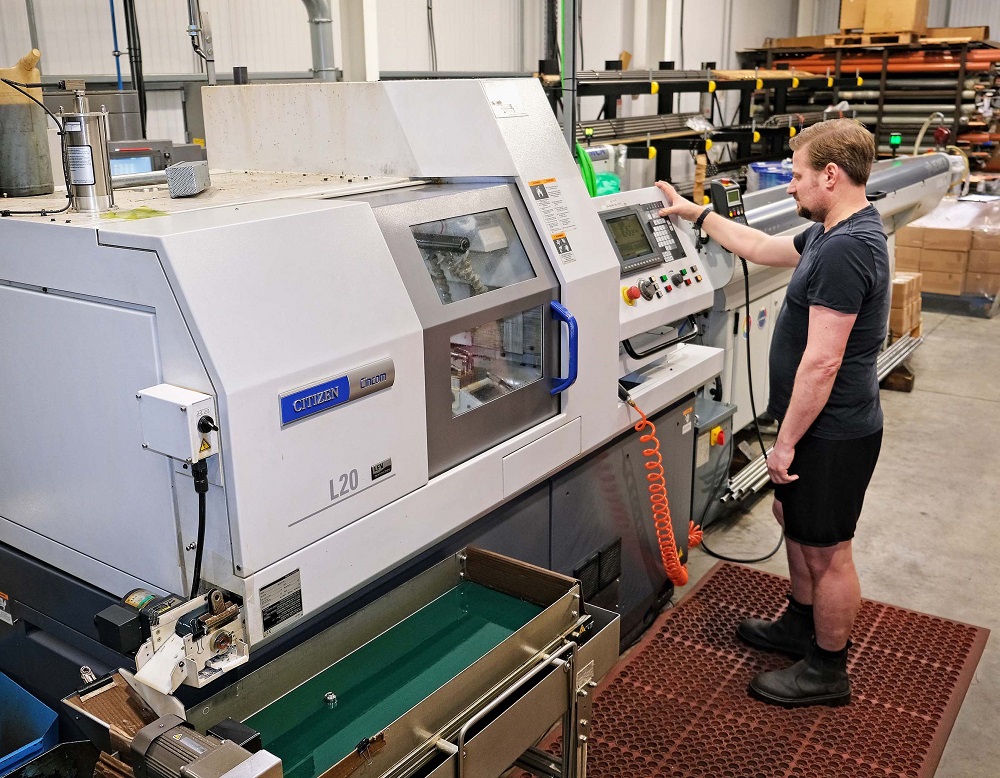For more than 30 years, Birmingham-based Rowan Precision has been manufacturing high-quality parts for customers – and for much of this time, the company has relied upon Guhring UK to supply its cutting tools.
As a subcontract machining specialist to industries such as the defence, medical and aerospace sectors, AS9100 and ISO9001-accredited Rowan specialises in sliding and fixed-head multi-axis turning, as well asfive-axis machining. With more than 10 sliding-head turning centres on the shop floor, the company has an enviable reputation for the medium-to-high volume lights-out manufacturing of small components. It is here that the service from Guhring plays a pivotal role.
Commenting upon the longstanding relationship with Guhring UK, Matthew Lowe, technical director at Rowan Precision, says: “We’ve had a good relationship with Guhring for many years and they supply us with high-quality tooling and excellent technical advice. When we need something they are here to have conversations and meetings about upcoming jobs, and we can talk about the processes with Guhring’s technical team. We cut anything from plastics up to titanium, the high EN numbers, iridium platinum and other challenging materials. Guhring will sit down with us, look at our drawings and give us what we require to do the job.”
Looking at specific tools, Lowe says: “We use a bit of everything. This ranges from Guhring’s Micro end mills, its Diver cutters, the RF Speed and a lot of the Ratio range of through-coolant drills. We also use their grooving tools and the micro-boring system. We have an entire range of products and they are all very easy to use. Importantly, we have confidence that when we run lights out, we know how long the tool is going to last. Every component and every drawing has a defined tolerance; we need to ensure that the tooling we use can work within that tolerance for a certain period of time. The Guhring products certainly provide that confidence, giving us the ability to run our machines lights out.”
With such a diverse selection of Guhring tools utilised at Rowan Precision, the company also makes use of the Guhring TM multi-vending machine to ensure the correct tool is always on hand for the multitude of components that the company manufactures.
Considering specific applications, Lowe says: “We recently needed tools for a particular job and Chris Bush from Guhring came in and spoke to us about the application, the material and the number of parts we would be running. From this, Chris came back the same afternoon with suggestions and tool data from Guhring. We moved forward and purchased these tools and they are working very successfully. This excellent level of service supports our aims to achieve optimal machining performance and tool life.”
Discussing the relationship with Rowan Precision from a Guhring perspective, Guhring UK sales managerChris Bush says: “We’ve had a strong relationship with Rowan Precision for many decades and, as soon as they have a new component, they’ll give us a call and we’ll come in and take a look at the component, the drawing and recommend the tools best suited to the application.
“Rowan Precision has a lot of sliding-head turning centres machining small components, so they purchase our Micro Precision line of tools,” he continues.“This encompasses everything from milling cutters to drills. We also supply a lot of Micro Diver tools and Micro Milling cutters, which are perfect for all the typically hard-to-machine materials at Rowan Precision. This can range from grade 5 titanium to 316 stainless steel and everything in between.”
Discussing the continually expanding range of micro-tools, Bush concludes: “We’ve taken the Diver milling cutter geometry and incorporated that into a Micro Diver, so we get all the benefits of the Diver range on a micro-end mill. This allows Rowan to apply small tools to their difficult-to-machine materials while holding very tight tolerances and drastically reducing cycle times. As a company that runs lights-out machining, Rowan needs secure processes. They need tools that they have complete confidence in. The Guhring range of Micro Diver tools enables Rowan to set the machines up at the end of the shift when they go home, and know the tools will perform through the night. When the staff return to work in the morning, they are guaranteed high-quality components.”
For further information www.guhring.co.uk



















